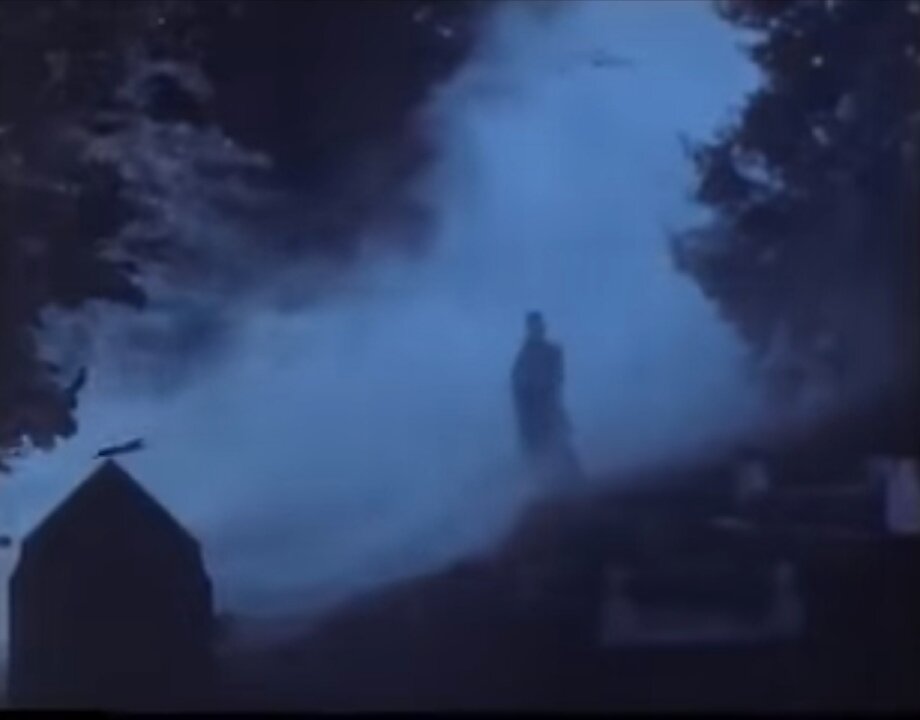I stumbled upon Belladonna of Sadness (Kanashimi no Belladonna) through the intriguing corners of a Facebook group Incredibly Strange Films. The artwork alone, a swirling vortex of colour was enough to pique my curiosity. Little did I know I was about to plunge into a cinematic experience by Eiichi Yamamoto that was as visually stunning as it was emotionally raw, and one that definitely warranted a hefty trigger warning.
Set against a backdrop of medieval feudalism, the film introduces us to the innocent love of Jeanne and Jean. Their hopes for a blessed union are brutally shattered when they seek the Lord of the Manor's approval. Jean is violently ejected, and Jeanne suffers a horrific violation that leaves her broken in spirit and body. In her despair, a figure emerges – the Devil himself. He offers her power, a tempting path to revenge. Initially, Jeanne refuses, clinging to some semblance of her former self. However, as life throws relentless waves of hardship her way, she finds herself increasingly drawn to the dark bargain.
To call Belladonna of Sadness ‘strange’ is an understatement. It's an avant-garde beast, a mesmerizing and often disturbing tapestry woven from lush, flowing watercolors that form the majority of its visual landscape. Yet, this serene beauty is constantly disrupted and enhanced by a kaleidoscope of other animation styles, each transition feeling like a descent into a different layer of Jeanne's psyche.
The psychedelic sequences, particularly those depicting Jeanne's eventual pact with Satan, are a true highlight albeit a deeply unsettling one. The swirling colours and distorted forms, set to a hypnotic soundtrack, create a visceral sense of her descent. Then, out of the blue, a 70s musical number will erupt, somehow perfectly capturing the underlying emotion of the scene, be it anguish, burgeoning power, or a descent into madness.
Despite its artistic flourishes, the overwhelming feeling that permeates ‘Belladonna of Sadness’ is one of profound sadness. It's a lament for the violation and subsequent trials endured by this poor woman. As the narrative unfolds, it becomes clear that the film operates on a deeper level, exploring the historical subjugation of women and the terrifying absurdity of the witch trials.
Jeanne, with her knowledge of natural remedies, is inevitably labeled a witch by a community that ironically claims Christian piety. The hypocrisy of their actions, their willingness to condemn and ostracize her, leads to her loss of faith in their dogma. In its place, a different kind of power begins to bloom within her – a fierce independence forged in the fires of her suffering.
The film resonated with me on a similar level to Robert Eggers' The Witch. Both narratives center on a young woman unfairly blamed for the chaos and misfortune that befalls her community. In both cases, the true source of the darkness lies not within the accused woman but within the fear and prejudice of those around her. Jeanne, like Thomasin in The Witch, becomes a scapegoat, a vessel for the anxieties and insecurities of a patriarchal society.
Belladonna of Sadness is not an easy watch. It's visually arresting but often deeply disturbing. It's a film that will stay with you long after the credits roll, prompting reflection on themes of power, oppression, and the enduring consequences of societal prejudice. It's a testament to the power of animation to explore complex and challenging themes in ways that live-action often cannot. If you're brave enough to venture into its strange and beautiful world, be prepared for an experience that is both unforgettable and deeply unsettling. Just heed that trigger warning – you'll likely need it.
LINK: Video Girl AI - Cult Manga Review
LINK- The Rise of Retro Gaming During Covid
LINK: Japan: My Journey to the East
LINK- Blood, Sweat and Pixels- Book Review
LINK- Utopia for Realists- Book Review
LINK- ‘Natives: Race and Class in the Ruins of Empire’ LINK: Elden Ring- Videogames As Art





























